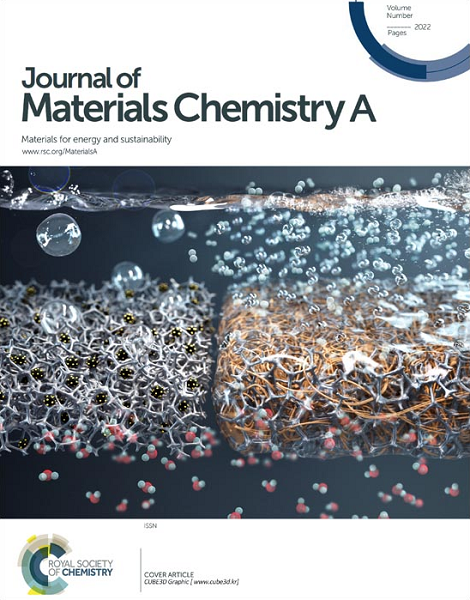Precisely engineered conjugated polyimide cathodes with dense redox-active carbonyl sites for superior lithium-ion battery performance
IF 10.7
2区 材料科学
Q1 CHEMISTRY, PHYSICAL
引用次数: 0
Abstract
Polyimide cathode materials have enticed tremendous attention as alternatives to transition-metal electrodes owing to their large theoretical capacity, structural diversity, low cost, and rapid reaction kinetics. Conversely, such imide electrodes still face a severe challenge to achieve their energy storage applications satisfactorily due to the insufficient utilization of their redox-active sites originating from their low electronic conductivities. Herein, four functionalized polyimide composites have been fabricated by virtue of an in situ polycondensation reaction between a newly synthesized benzophenone–benzoquinone-based diamine and commercial dianhydrides in the presence of a conductive Super C45 material for application as cathode materials in Li-ion batteries. Such innovative integration of carbonyl groups of benzophenone, benzoquinone, and diimide rings with the Super C45 material not only creates a stable porous structure with abundant accessible redox-active sites but also guarantees fast electron/ion diffusion. Consequently, our targeted PMQP-SP cathode delivers high capacities of 143 mA h g−1 at 0.2C and 122 mA h g−1 at 1C and attains better rate capability besides ultra-stable cycling performance with 85% capacity retention over 500 cycles at 2C. According to DFT calculations, the theoretical results are well consistent with the electrochemical performance of the synthesized composites. Generally, this work suggests an efficient strategy to design novel carbonyl-rich organic electrodes for next-generation green rechargeable batteries.

精确工程共轭聚酰亚胺阴极与密集的氧化还原活性羰基位点优越的锂离子电池性能
聚酰亚胺正极材料因其理论容量大、结构多样、成本低、反应动力学快等优点,作为过渡金属电极的替代品而受到广泛关注。相反,由于其低电子电导率导致其氧化还原活性位点的利用率不足,这种亚胺电极仍然面临着令人满意地实现其储能应用的严峻挑战。本文在导电超级C45材料的存在下,利用新合成的二苯甲酮-苯醌基二胺与商业二酐的原位缩聚反应制备了四种功能化聚酰亚胺复合材料,用于锂离子电池的正极材料。这种将二苯甲酮、苯醌和二亚胺环的羰基与Super C45材料的创新整合,不仅创造了一个稳定的多孔结构,具有丰富的可达氧化还原活性位点,而且保证了快速的电子/离子扩散。因此,我们的目标PMQP-SP阴极在0.2C和1C下提供143 mA h g - 1和122 mA h g - 1的高容量,除了在2C下500次循环中保持85%的超稳定循环性能外,还获得了更好的倍率能力。根据DFT计算,理论结果与合成的复合材料的电化学性能很好地吻合。总的来说,这项工作为设计下一代绿色可充电电池的新型富含羰基的有机电极提供了一种有效的策略。
本文章由计算机程序翻译,如有差异,请以英文原文为准。
求助全文
约1分钟内获得全文
求助全文
来源期刊

Journal of Materials Chemistry A
CHEMISTRY, PHYSICAL-ENERGY & FUELS
CiteScore
19.50
自引率
5.00%
发文量
1892
审稿时长
1.5 months
期刊介绍:
The Journal of Materials Chemistry A, B & C covers a wide range of high-quality studies in the field of materials chemistry, with each section focusing on specific applications of the materials studied. Journal of Materials Chemistry A emphasizes applications in energy and sustainability, including topics such as artificial photosynthesis, batteries, and fuel cells. Journal of Materials Chemistry B focuses on applications in biology and medicine, while Journal of Materials Chemistry C covers applications in optical, magnetic, and electronic devices. Example topic areas within the scope of Journal of Materials Chemistry A include catalysis, green/sustainable materials, sensors, and water treatment, among others.
 求助内容:
求助内容: 应助结果提醒方式:
应助结果提醒方式:


